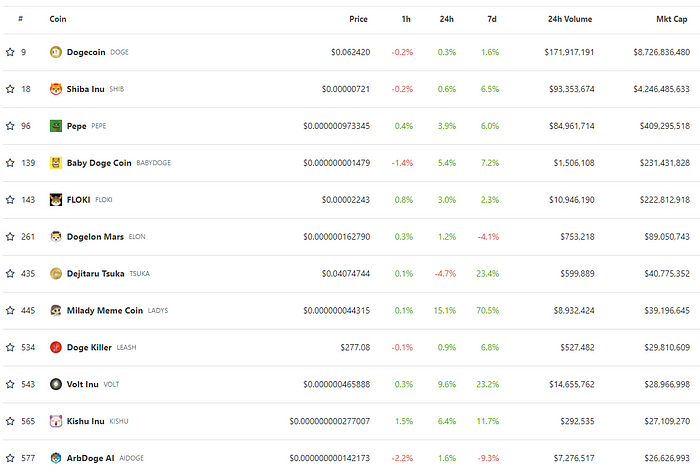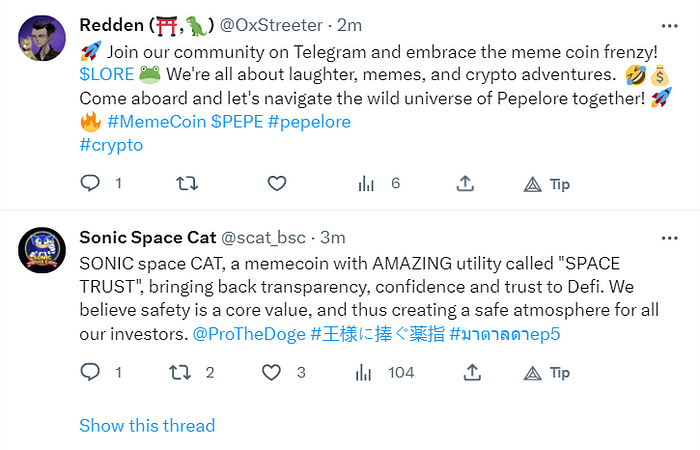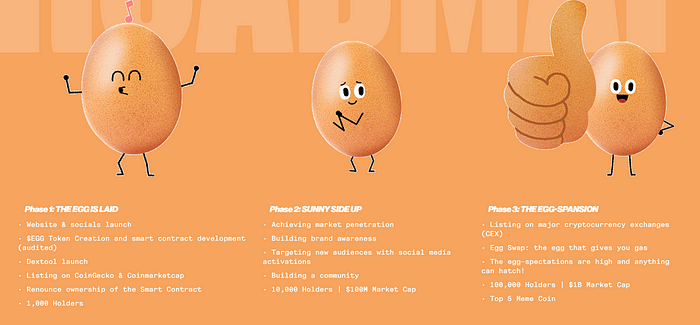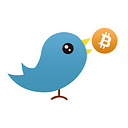What Makes a Good Memecoin? Tokenomics Review

Every once in a while, a cryptocurrency will explode in valuation while having little to no true utility. Memecoins, as we have come to call them, are a unique sector of the cryptocurrency industry, and some like Dogecoin, Shiba Inu, and Pepecoin have become some of the most well-known tokens. Buying them is more akin to gambling than investing, but not every memecoin is created equal. In this article, we’ll analyze some of the characteristics and tokenomics decisions that separate a memecoin with potential from the rest.
Finding the right memecoin to buy is an incredibly difficult task, as there are tens of thousands of scams or coins that go nowhere for every one Dogecoin. Typically, a memecoin is defined as a cryptocurrency that derives its value from the strength of its community and the amount of buying activity, as opposed to the fundamental value of a new product or application. Success is almost entirely based on marketing and growth of the brand than it is on development or traditional metrics, which is why memecoins can explode in price much quicker than other types of cryptocurrencies.

Finding a memecoin, first and foremost, requires due diligence to ensure that the smart contracts are legitimate and the project has no plans to scam users or “rug pull.” Typically, signs that a project is safe include code that a top auditing firm checks or that is directly cloned from another token or project. Additionally, it’s important to check the supply of tokens held by the founders and whether or not they can choose to sell whenever they want, which would crash the token price.
The community behind a memecoin is the most important characteristic of success. Without a group of people talking about the coin, hyping it on social media, and believing that it will continue to increase in price, the coin has no way of accruing value. Many projects will try to fake a community using bots, duplicate accounts, and other malicious methods. This becomes abundantly clear when the project has tens of thousands of Discord members, or Twitter mentions, but very little activity on-chain and/or a lot of selling pressure. To build an organic community, many people must have the opportunity to buy the token when it is cheap enough for them to think it has the potential to grow much bigger. Consequently, the initial release of the token is one of the most critical moments, as this can decide whether or not the token will be concentrated in the hands of a few or distributed among many. A token airdrop can help, but it can also lead to a lot of selling from users who have no desire to hold the coin.

Two metrics many believe to be important but hold no bearing on the coin’s value are its price and total supply. Many memecoins choose to make a massive supply, as they believe that gullible holders will see a low price and buy billions if not trillions, of the token with hopes that it will reach a dollar a piece or more. This will never happen, and the more important metric to look at is market capitalization, which can be determined by multiplying the price by the number of tokens in circulation. This provides a much better picture of the token’s value and how much potential it has to grow. A tactic used by Shiba Inu was to create a massive supply and then remove half of the tokens from existence, artificially making token holders feel like their tokens now have more value even though this may have been planned from the beginning. Given the intangible nature of valuing a memecoin, it is nearly impossible to determine what is undervalued versus overvalued.
Dogecoin, as the original memecoin, is simple in its structure: the token has an infinitely increasing supply and otherwise functions as a clone of a simple payment blockchain like Bitcoin or Litecoin. Since then, Ethereum-token-based memecoins have introduced new properties to make them stand out. Some of these include a tax on transfers or exchanges that either gets removed from the supply or redistributed to holders, NFTs or token-gated communities, or some gamified aspect. They also commonly release roadmaps promising new features to be released later. A red flag to look out for is when tokens are incredibly vague in their roadmap or do not provide any concrete details, as these coins assume that momentum will carry their token to success, which is rarely the case.

Finding a successful memecoin is more difficult than finding a needle in a haystack, but knowing what to look for and what to avoid can help make the haystack a little smaller. It is important to remember that regardless of how much research is put into memecoins, it is still a gamble and cannot be compared to investing in other cryptocurrencies or blockchain applications that are vying for mainstream adoption and a real-world use case.
By Lincoln Murr
